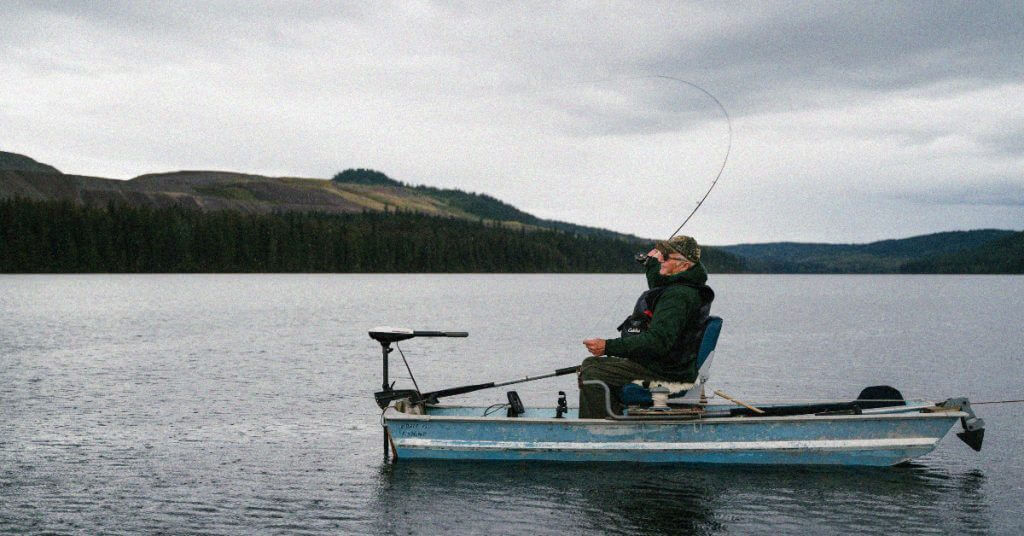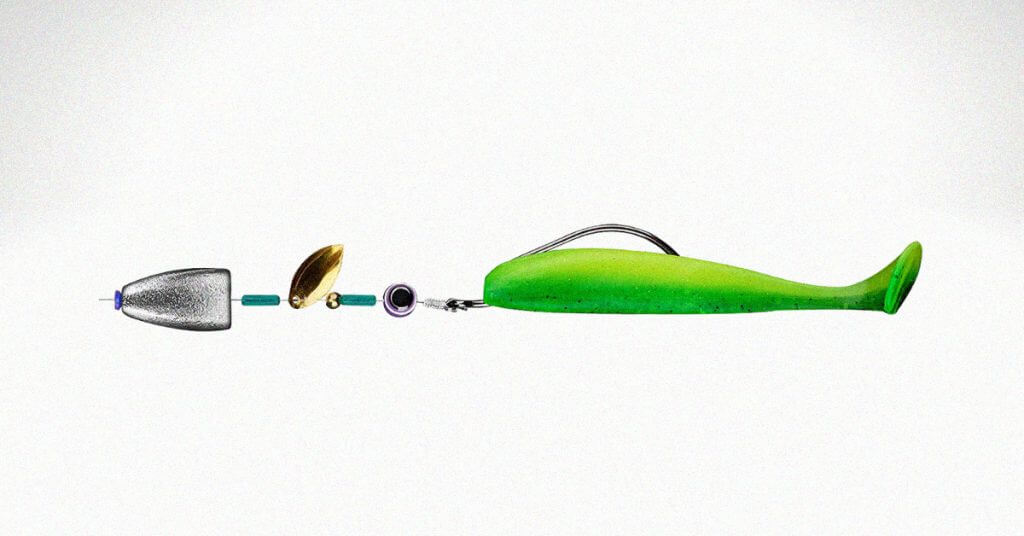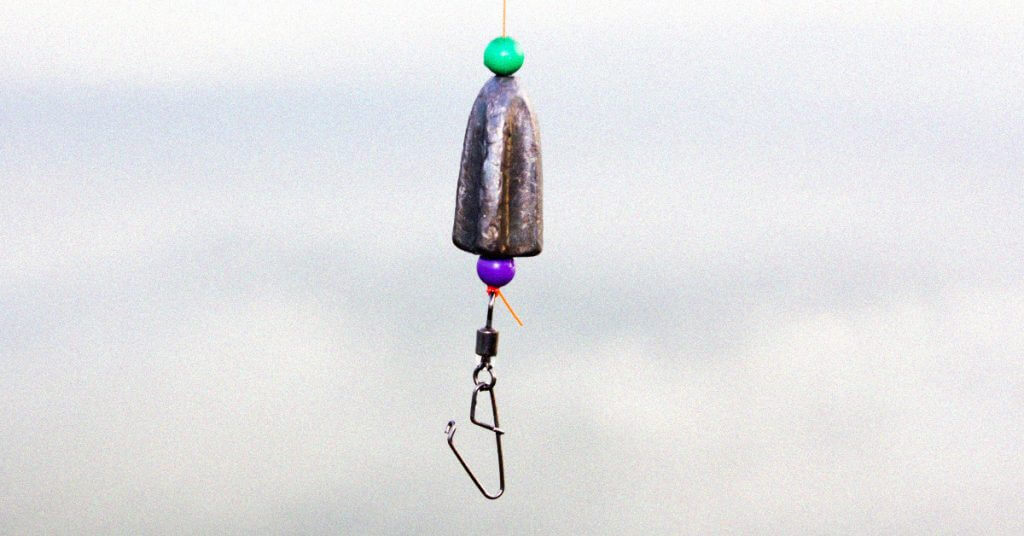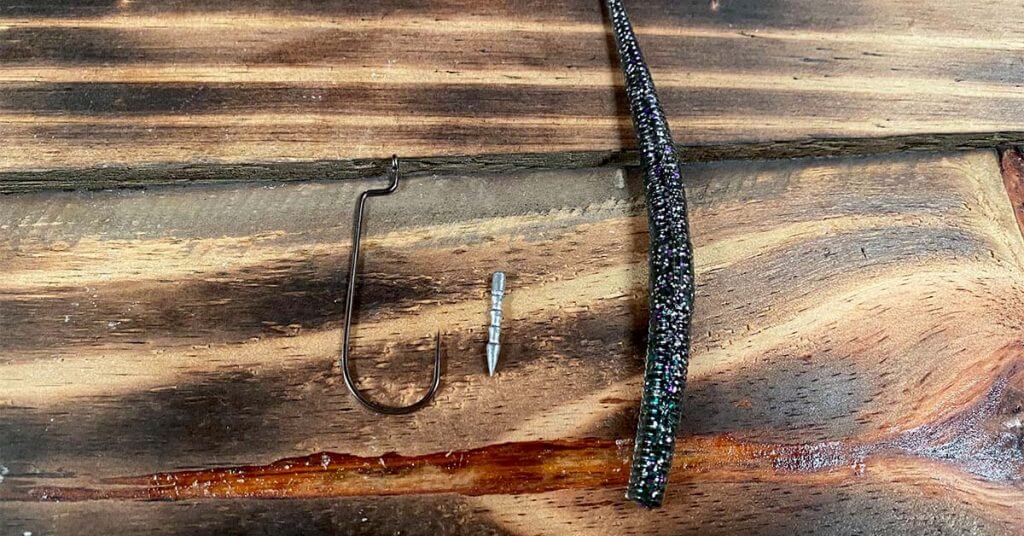We independently research, test, and recommend the best products; you can learn more about our review process here.
Texas rigs use light weights near the hook, which makes them the better rig for fishing in shallow water.
Carolina rigs use heavier weights away from the hook, so it doesn’t inhibit the lure’s action, so it’s the best choice for fishing in deep water.
There are countless fishing rigs to learn about as a beginner or expert angler, which is incredibly overwhelming.
Thankfully, we don’t have to know every rig to be successful bass anglers.
In this guide, I will break down the similarities and differences between two of the most popular rigs, the Carolina rig and the Texas rig.
Keep reading to know how to tie each rig and when to throw the Texas rig vs Carolina rig.
In this YouTube video from YourBassGuy.com, Community Coordinator Wesley Littlefield discusses the differences between the Carolina rig vs Texas rig!
Carolina Rig vs Texas Rig: Pros and Cons
To the average person, a Carolina rig and Texas rig look similar, so is there a need for both rigs in our bass fishing arsenal?
Texas Rigging
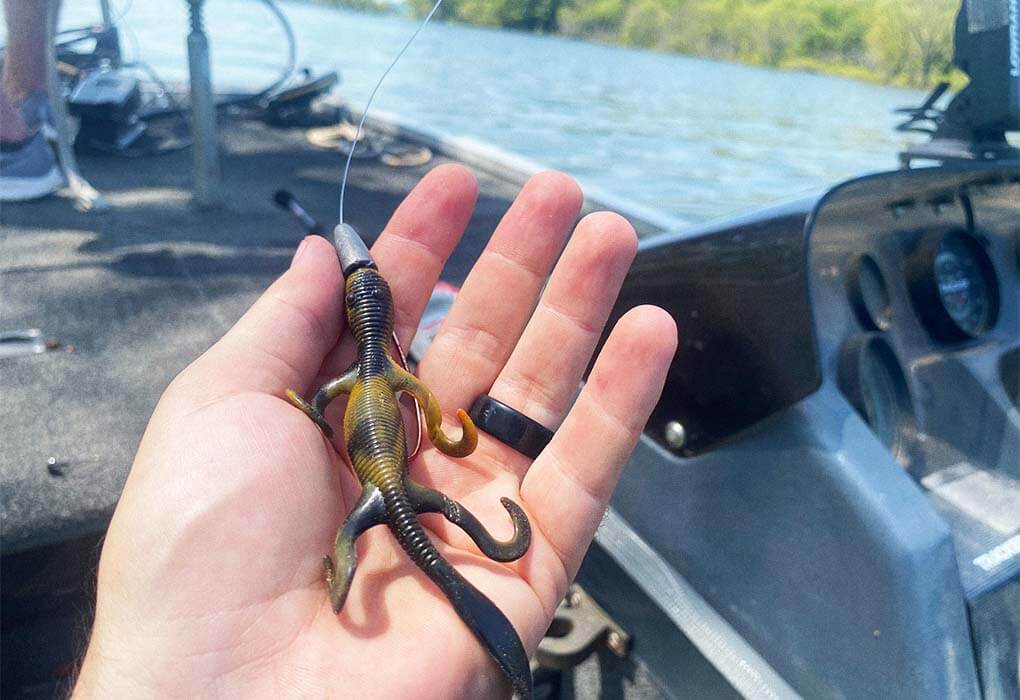
Texas rigging is one of the most popular rigs because it works in many different situations and is simple to tie and use.
You can use nearly any soft plastic as a Texas rig, but the hook and weight make the most significant difference.
To rig a soft plastic Texas-style, you must put a tungsten bullet-weight on the line before tying on an Extra Wide Gap hook (EWG).
Then put the worm or creature bait on as straight as possible.
Once it is rigged, you’re ready to begin fishing in about 10′ of water or less in the grass, brush piles, and rocky areas.
Pros
- Versatile
- Excellent shallow water search bait
- Good in cover and around structure
- Easy to rig
Cons
- Not great in water deeper than 15′
- It doesn’t always look natural
Carolina Rigging
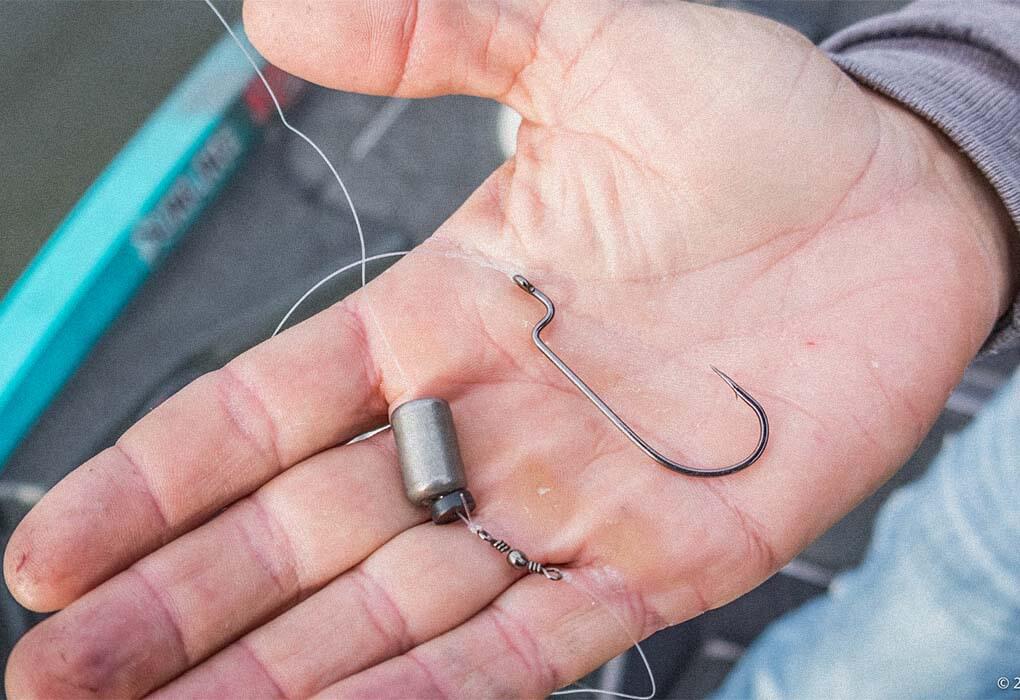
The Carolina rig shines brightest in 15+ feet of water, where the Texas rig loses its effectiveness.
However, it’s more time-consuming to tie, and a Texas rig can be modified with bobber stops and a heavier weight to resemble a Carolina rig.
I think of a Carolina rig as a Texas rig with a leader. The leader gives the bait a more natural action but creates another weak spot in the line because of the knot.
You rig the soft plastic the same as you would on a Texas rig; the main differences are the swivel that keeps the weight from sliding to the hook and the 1-2 foot leader.
Pros
- Excellent in deep water where the Texas rig is less effective
- It can be used with any soft plastic
- Versatile
Cons
- Time-consuming to tie
- Creates multiple weak spots in your line
- Not great around laydowns and brush piles.
Texas vs Carolina Rig: What are the Differences?
Though the differences might seem subtle to beginners, as an angler progresses in experience, they learn that the little things make all the difference when bass fishing.
Texas Rig Fishing Setup
Rigging a soft plastic Texas-style is simple, but there is a debate about the necessity of a weight on a Texas rig.
One camp argues it has to have a weight to be considered a Texas rig, and the other argues you can rig a soft plastic weightless.
I’m in the weightless camp, but for the sake of argument, we’re going to discuss Texas rigging with a weight.
Here’s what you’ll need:
- Favorite soft plastic worm, lizard, or curly-tail grub
- EWG hook or round bend hook, 3/0, 4/0, or 5/0 should cover most scenarios
- Tungsten or lead bullet weight
- A weight peg/ bobber stop is used when punching or flipping heavy cover
I like to throw it on a 7′ medium-heavy fast action rod, switching between a spinning reel or baitcaster depending on the technique.
If I’m using a slow technique, I’ll use the spinning reel because my spinning reels are generally a lower gear ratio than my baitcasting reels.
How to Tie a Texas Rig
Tying a Texas rig doesn’t take much time once you’ve learned how to do it properly. We have another article and video explaining how to tie the Texas rig, so I’m only giving the basics here.
- Place bullet weight on the main fishing line
- Tie on the hook
- Place soft plastic bait on the hook
- Get to fishing
When to Use a Texas Rig
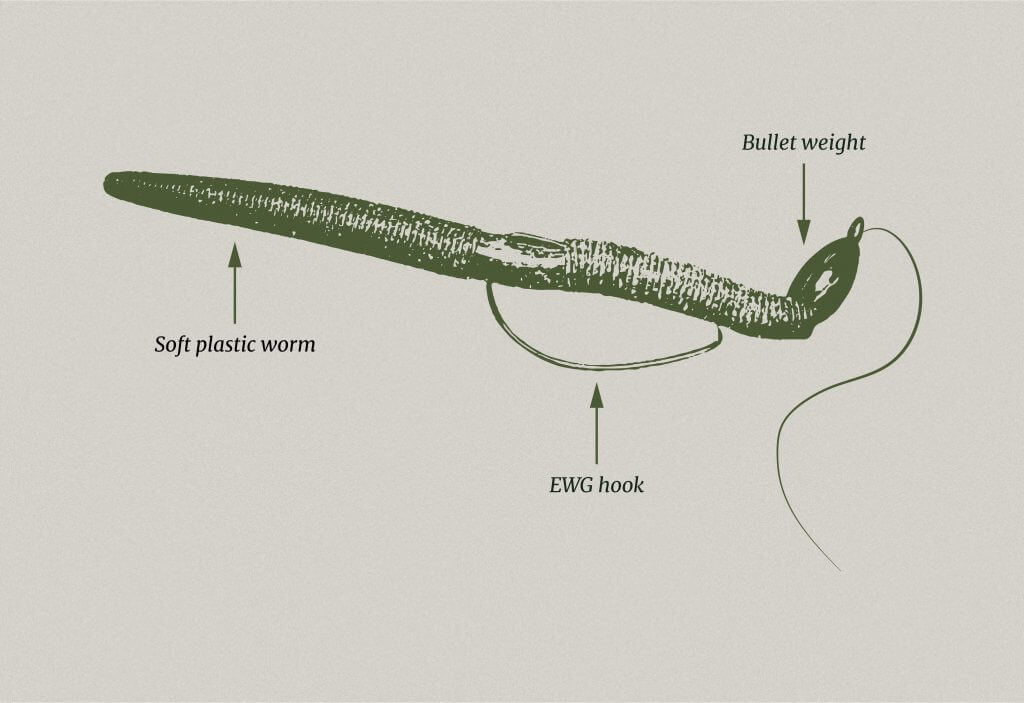
The Texas rig works best during the spring, summer, and fall when bass are most actively feeding in shallow areas.
If you’re fishing in 10′ or less, the Texas rig will work in most instances.
Because the hook isn’t exposed, this is a weedless rig so that you can fish it in brush piles, Lilly pads, and many different types of grass.
The weight sitting at the top of the hook makes it more difficult to snag on things.
Most anglers peg the weight when punching or flipping in and around thick vegetation. This keeps the weight close to the bait and helps it get through the cover.
If you’re having trouble punching through, try using a heavier weight.
The Texas rig is excellent for shallow water, but how should one fish a Texas-rigged soft plastic?
Texas Rigging Fishing Tips & Techniques
I like throwing a Texas rig because it’s simple.
I’m most likely dragging a lizard or worm along the bottom if the water is cool during pre-spawn or very hot.
During the late spring and early summer, when bass are extremely shallow, punching with a creature bait will induce a lot of bites, similar to a jig.
I’ll swim flukes, a lizard, or curly-tail worms when the water is in the upper 60s or low 70s. This means I’m casting and then steadily retrieving it.
When that’s not working, I’ll switch to hopping it off the bottom, and if jumping it doesn’t get a bite, I’ll slow down to dragging it along the bottom.
Carolina Rig Setup
The Carolina rig setup is very similar to the Texas rig setup, except you need more time to put it together and more tackle.
Here’s what you’ll need:
- Favorite soft plastic lure
- EWG hook or round bend hook, 3/0, 4/0, or 5/0
- Tungsten or lead bullet weight
- Bead
- Swivel
- 1-2′ fluorocarbon leader line
I use the same rods and reels I do for the Texas rig, a 7′ medium heavy fast action rod, and a reasonably fast gear ratio reel.
How to Tie a Carolina Rig
Most competitive anglers don’t like the Carolina rig because it takes too long to tie but MLF pro Mark Rose isn’t one of them.
Even though you could tie on two lures in the time it takes to secure one C-rig he always has a Carolina rig waiting to be used.
We have an in-depth Carolina rig guide, so I won’t spend a lot of time explaining how to tie the Carolina rig.
- Slide sinker and glass bead onto the mainline
- Tie the swivel onto the mainline, then tie the leader to the swivel
- Tie the worm hook onto the leader line
- Place your favorite soft plastic on the hook Texas-style
When to Use a Carolina Rig
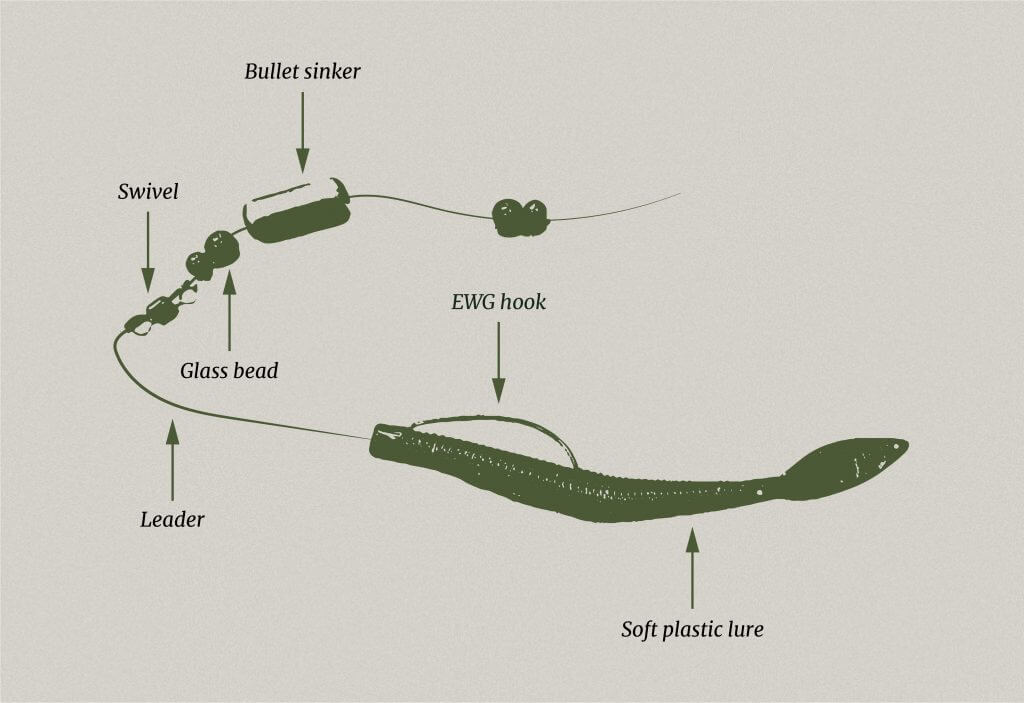
The Carolina rig works when targeting deep fish during the summer heat.
When you’re fishing rock piles or ledges in 15′ or deeper water, that’s when the Carolina rig will work best.
The leader makes it more likely to get hung up in brush piles or punching, so I don’t recommend using it when fishing these instances.
C-Rig Fishing Techniques & Tips
Fishing the Carolina rig is much less complicated than tying it.
You want to maintain contact with the bottom for as long as possible.
This often means dragging it with the rod and reeling in the slack.
If you have a reel with a slow gear ratio, then you might get away with slowly reeling it in, but I’ve found that it’s best to drag it with your rod.
I increase the size of my weight with the depth of the water. So I use a heavy weight in deep water and light weight in shallow water.
Frequently Asked Questions
What is the point of a Carolina rig?
The point of a Carolina rig is for fishing in deep water without messing with the lures’ action.
Is the Wacky rig better than the Texas rig?
A Wacky rig is better than the Texas rig in certain situations. A Texas rig is best around vegetation, and a Wacky rig is best in open water or along the edge of vegetation.
One More Cast
After comparing the Texas rig vs Carolina rig, we see each rig has its place, but most anglers prefer to use a Texas rig because of its simplicity.
However, that doesn’t mean you shouldn’t use the C-rig.
You should use the Texas rig when:
- Fishing shallow
- Fishing in an area with lots of cover
- Punching or flipping
You should use a Carolina rig when:
- Fishing deep rock piles
- Fishing open water flats where a natural action is needed
What’s your favorite bass fishing rig? Let me know in the comments!
yourbassguy.comTexas rigs use light weights near the hook, which makes them the better rig for fishing in shallow water.
Carolina rigs use heavier weights away from the hook, so it doesn’t inhibit the lure’s action, so it’s the best choice for fishing in deep water.
There are countless fishing rigs to learn about as a beginner or expert angler, which is incredibly overwhelming.
Thankfully, we don’t have to know every rig to be successful bass anglers.
In this guide, I will break down the similarities and differences between two of the most popular rigs, the Carolina rig and the Texas rig.
Keep reading to know how to tie each rig and when to throw the Texas rig vs Carolina rig.
In this YouTube video from YourBassGuy.com, Community Coordinator Wesley Littlefield discusses the differences between the Carolina rig vs Texas rig!
Carolina Rig vs Texas Rig: Pros and Cons
To the average person, a Carolina rig and Texas rig look similar, so is there a need for both rigs in our bass fishing arsenal?
Texas Rigging

Texas rigging is one of the most popular rigs because it works in many different situations and is simple to tie and use.
You can use nearly any soft plastic as a Texas rig, but the hook and weight make the most significant difference.
To rig a soft plastic Texas-style, you must put a tungsten bullet-weight on the line before tying on an Extra Wide Gap hook (EWG).
Then put the worm or creature bait on as straight as possible.
Once it is rigged, you’re ready to begin fishing in about 10′ of water or less in the grass, brush piles, and rocky areas.
Pros
- Versatile
- Excellent shallow water search bait
- Good in cover and around structure
- Easy to rig
Cons
- Not great in water deeper than 15′
- It doesn’t always look natural
Carolina Rigging

The Carolina rig shines brightest in 15+ feet of water, where the Texas rig loses its effectiveness.
However, it’s more time-consuming to tie, and a Texas rig can be modified with bobber stops and a heavier weight to resemble a Carolina rig.
I think of a Carolina rig as a Texas rig with a leader. The leader gives the bait a more natural action but creates another weak spot in the line because of the knot.
You rig the soft plastic the same as you would on a Texas rig; the main differences are the swivel that keeps the weight from sliding to the hook and the 1-2 foot leader.
Pros
- Excellent in deep water where the Texas rig is less effective
- It can be used with any soft plastic
- Versatile
Cons
- Time-consuming to tie
- Creates multiple weak spots in your line
- Not great around laydowns and brush piles.
Texas vs Carolina Rig: What are the Differences?
Though the differences might seem subtle to beginners, as an angler progresses in experience, they learn that the little things make all the difference when bass fishing.
Texas Rig Fishing Setup
Rigging a soft plastic Texas-style is simple, but there is a debate about the necessity of a weight on a Texas rig.
One camp argues it has to have a weight to be considered a Texas rig, and the other argues you can rig a soft plastic weightless.
I’m in the weightless camp, but for the sake of argument, we’re going to discuss Texas rigging with a weight.
Here’s what you’ll need:
- Favorite soft plastic worm, lizard, or curly-tail grub
- EWG hook or round bend hook, 3/0, 4/0, or 5/0 should cover most scenarios
- Tungsten or lead bullet weight
- A weight peg/ bobber stop is used when punching or flipping heavy cover
I like to throw it on a 7′ medium-heavy fast action rod, switching between a spinning reel or baitcaster depending on the technique.
If I’m using a slow technique, I’ll use the spinning reel because my spinning reels are generally a lower gear ratio than my baitcasting reels.
How to Tie a Texas Rig
Tying a Texas rig doesn’t take much time once you’ve learned how to do it properly. We have another article and video explaining how to tie the Texas rig, so I’m only giving the basics here.
- Place bullet weight on the main fishing line
- Tie on the hook
- Place soft plastic bait on the hook
- Get to fishing
When to Use a Texas Rig

The Texas rig works best during the spring, summer, and fall when bass are most actively feeding in shallow areas.
If you’re fishing in 10′ or less, the Texas rig will work in most instances.
Because the hook isn’t exposed, this is a weedless rig so that you can fish it in brush piles, Lilly pads, and many different types of grass.
The weight sitting at the top of the hook makes it more difficult to snag on things.
Most anglers peg the weight when punching or flipping in and around thick vegetation. This keeps the weight close to the bait and helps it get through the cover.
If you’re having trouble punching through, try using a heavier weight.
The Texas rig is excellent for shallow water, but how should one fish a Texas-rigged soft plastic?
Texas Rigging Fishing Tips & Techniques
I like throwing a Texas rig because it’s simple.
I’m most likely dragging a lizard or worm along the bottom if the water is cool during pre-spawn or very hot.
During the late spring and early summer, when bass are extremely shallow, punching with a creature bait will induce a lot of bites, similar to a jig.
I’ll swim flukes, a lizard, or curly-tail worms when the water is in the upper 60s or low 70s. This means I’m casting and then steadily retrieving it.
When that’s not working, I’ll switch to hopping it off the bottom, and if jumping it doesn’t get a bite, I’ll slow down to dragging it along the bottom.
Carolina Rig Setup
The Carolina rig setup is very similar to the Texas rig setup, except you need more time to put it together and more tackle.
Here’s what you’ll need:
- Favorite soft plastic lure
- EWG hook or round bend hook, 3/0, 4/0, or 5/0
- Tungsten or lead bullet weight
- Bead
- Swivel
- 1-2′ fluorocarbon leader line
I use the same rods and reels I do for the Texas rig, a 7′ medium heavy fast action rod, and a reasonably fast gear ratio reel.
How to Tie a Carolina Rig
Most competitive anglers don’t like the Carolina rig because it takes too long to tie but MLF pro Mark Rose isn’t one of them.
Even though you could tie on two lures in the time it takes to secure one C-rig he always has a Carolina rig waiting to be used.
We have an in-depth Carolina rig guide, so I won’t spend a lot of time explaining how to tie the Carolina rig.
- Slide sinker and glass bead onto the mainline
- Tie the swivel onto the mainline, then tie the leader to the swivel
- Tie the worm hook onto the leader line
- Place your favorite soft plastic on the hook Texas-style
When to Use a Carolina Rig

The Carolina rig works when targeting deep fish during the summer heat.
When you’re fishing rock piles or ledges in 15′ or deeper water, that’s when the Carolina rig will work best.
The leader makes it more likely to get hung up in brush piles or punching, so I don’t recommend using it when fishing these instances.
C-Rig Fishing Techniques & Tips
Fishing the Carolina rig is much less complicated than tying it.
You want to maintain contact with the bottom for as long as possible.
This often means dragging it with the rod and reeling in the slack.
If you have a reel with a slow gear ratio, then you might get away with slowly reeling it in, but I’ve found that it’s best to drag it with your rod.
I increase the size of my weight with the depth of the water. So I use a heavy weight in deep water and light weight in shallow water.
Frequently Asked Questions
What is the point of a Carolina rig?
The point of a Carolina rig is for fishing in deep water without messing with the lures’ action.
Is the Wacky rig better than the Texas rig?
A Wacky rig is better than the Texas rig in certain situations. A Texas rig is best around vegetation, and a Wacky rig is best in open water or along the edge of vegetation.
One More Cast
After comparing the Texas rig vs Carolina rig, we see each rig has its place, but most anglers prefer to use a Texas rig because of its simplicity.
However, that doesn’t mean you shouldn’t use the C-rig.
You should use the Texas rig when:
- Fishing shallow
- Fishing in an area with lots of cover
- Punching or flipping
You should use a Carolina rig when:
- Fishing deep rock piles
- Fishing open water flats where a natural action is needed
What’s your favorite bass fishing rig? Let me know in the comments!

